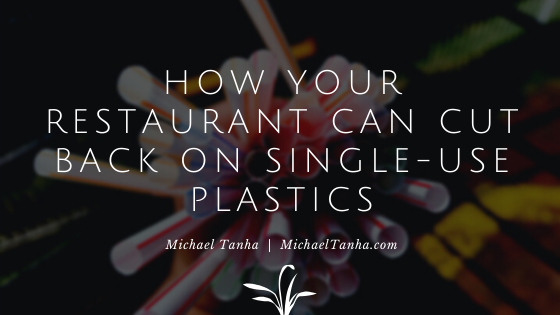Human beings are habitual creatures by nature; we tend to lean on what we know, and we can be difficult to sway in new, potentially uncomfortable directions — especially when it comes to eating and the culinary arts. That said, while there are many restaurants that emphasize a progressive and environmentally friendly approach to their business, there remains a disturbing number of establishments that focus on convenience over sustainability. More often than not, this method is embodied by single-use plastics — namely disposable cutlery and dishware.
Though single-use plastics may be tempting as a convenient, cheap option, these materials are causing widespread harm to the environment, and their perpetual use remains a dangerous norm that we must break to create a much-needed counter effect.
Take inventory
A full restaurant audit is a great first step in identifying and dissecting your single-plastic use. “What gets measured usually gets improved,” per an old saying, and in this case, that means studying your waste production in order ledgers and trash bins to assess how much plastic is currently present. You may want to look for plastic materials like bottles, utensils, cups, dishes, takeout boxes, and lids. If any of these items are found in consistent amounts, it may be time to scheme a reduction plan.
Focus on what is necessary
Perhaps the biggest use of culinary single-use plastic is take-out ordering (for example, a set of plastic utensils included with an order of Chinese food). While this approach may be appreciated by the average customer, the reality is that, in many cases, take-out orders are just brought home and eaten anyway — and it is safe to assume that the majority of your customers own metal utensils. Furthermore, if you must include plastic cutlery, consider being more in-tune with the types of utensils included with each order. Think about how many times you may have received a fork and knife with an order that only required a spoon, or vice versa. This revamp will mean more attention to detail, but it is fully possible to establish balance in this regard — and your increased organization may be well-received by customers along the way, creating a key positive association.
Meet in the middle where possible
Any step beyond single-use plastic is a step in the right direction, and while it would be ideal to cut it out entirely, you may find that it is more feasible to ease your way in; this means meeting in the middle wherever possible en route to broad change. For instance, if your restaurant is known for its excessive use of plastic straws, consider limiting straw use without completely banning it. Furthermore, simply cut back on plastic use where it might not yet be possible to cut it out entirely — plastic wrap, a highly overused material in the restaurant scene, is a great example.
While the elimination of single-use plastic may seem like a daunting, even impossible task, the aforementioned ideas are simple, yet effective ways to generate a positive snowball effect.
